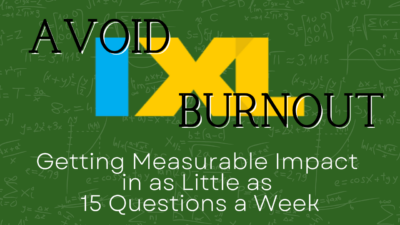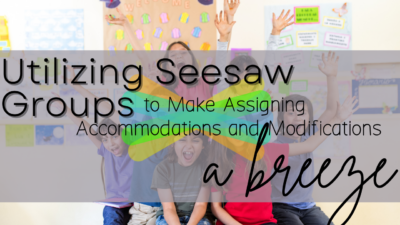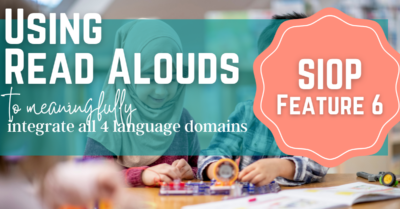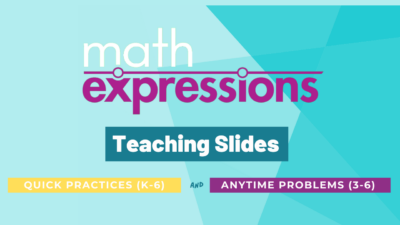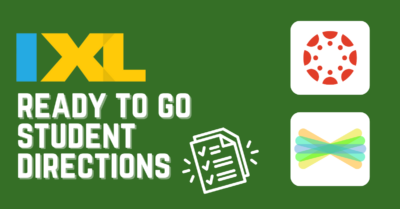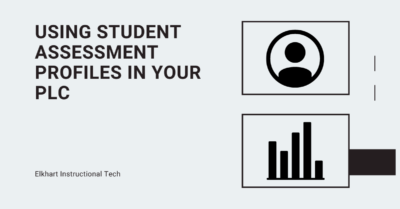Using Seesaw to Support the Four Language Domains: Listening Edition
At Elkhart Community Schools, we have a surprisingly large population of English Language Learners for a small midwest town. Because of this, we have to be very intentional about planning for and utilizing the four language domains to help boost understanding of the English language when providing content to students. In this post, we will focus on practicing the language domain of listening and how we can use Seesaw to help support this domain.
January Tech Treasures
I have curated some fun and engaging activities that you can do with your students in this cold and dreary month. Also If you haven’t heard we have started a podcast!
Avoid IXL Burnout: Getting Measurable Impact in as Little as 15 Questions a Week
Are you looking to make the most of IXL? In the post below, we’ll talk about the IXL Effect and how to ensure you are making the most of IXL in the classroom. A bit of heavy reading behind the “IXL Effect” The IXL Effect is a well-known phrase in the IXL community that refers to the impact that IXL can make on student proficiency, specifically when comparing schools that use IXL to those that do not use IXL. IXL conducted research that explored IXL usage across the entire state of Indiana. By examining a large number of schools, they...
How to Use IXL Without an Account
Even without an IXL paid account, you can still support students while they’re using IXL. Use the resources below and make sure to check out the videos linked at the bottom of the page!
Utilizing Seesaw Groups to Make Assigning Accommodations and Modifications a Breeze
If you haven’t checked it out yet, now is the time. This past semester, Seesaw released a new *game-changing* feature, Seesaw Groups. Seesaw groups allow you to assign student work to groups of students with one click. Creating and Assigning to Seesaw Groups Seesaw groups are also super easy to create. From your Seesaw homepage, select the wrench in the top right corner. Under students > Manage Student Groups > Type in a name for the student group > Add Student Group. From there, you can select the students you want in that group, then select the green check mark...
Using Read Alouds to Meaningfully Integrate All 4 Language Domains
Earlier this week I stumbled upon a podcast called Equipping ELL’s with Beth Vaucher. One episode that really caught my attention was “4 Ways to Easily Cover All 4 Domains Through a Read Aloud”. Beth walks through how to actively engage your students in all four of the language domains using just one read aloud. This post is based on the ideas that she shared in her podcast. Check out this episode, below! Why Use Read Alouds There are many evidence-based benefits of reading aloud to students. Reading aloud creates a classroom community by establishing a text known by the entire...
New Podcast, Updates, and More!
We have been working hard pushing out content that is accessible, quick, and meaningful. We hope you enjoy the various methods we are using to get information out to you as we know Time is sacred! ✨New✨ Podcast Don’t have time to watch something? Need something quick? Want to listen to EdTech tips and hacks while you set your room up for the morning? Listen to our Podcast 👇🎙️ Our latest episode is on our favorite IXL features and is only 7 minutes! We will be pushing new episodes out every other Friday. Be sure to subscribe and give us...
Bringing High-level Content to Lower Readability Levels
Ensuring all students are successful at learning content in your classroom starts with lesson preparation. The SIOP component of Lesson Preparation sets the tone for the entire SIOP framework. In this blog post, we will highlight two features of lesson preparation: choosing appropriate content concepts for both age and educational backgrounds and adapting content to all levels of student proficiency, and look at how these two features work hand in hand and when planned for effectively, can change the trajectory of your classroom. In specific, we will focus on different methods you can use to adapt texts so that you...
SIOP Feature 5 in Action: Adapting Content with Graphic Organizers
Graphic organizers are an amazing way to adapt content to meet the needs of all of your learners. In this blog post, we will highlight using graphic organizers to help support the lesson preparation feature of adapting content to all levels of student proficiency. Graphic organizers are a great tool that provides students with visual clues to help support text and language that is challenging to understand. They can be used before, during, or after reading. Graphic organizers can also be used specifically for specific subjects and content areas. Seesaw UsersIf you are looking for activities that have graphic organizers,...
Save Time With Digital Teaching Slides for Quick Practices and Anytime Problems in Math Expressions
Do you remember hearing “Do The Blue” but don’t remember what it refers to? Quick Practices (K-6th), Daily Routines (K-2nd), and Anytime Problems (3rd-6th) are all parts of the “Doing the Blue” section of lessons in Math Expressions. “Doing the Blue” are the main components of the lesson that should be taught. Quick Practices, Daily Routines, and Anytime Problems are an important part of the process and student learning in math. These practices and routines focus on concepts and skills throughout the year that are needed for student mastery. They build classroom belonging and develop student leaders, as well as...
✨New✨ Training Request Form
Did you know that Elkhart Community Schools has an entire professional development team that is looking to get out into buildings to help you feel successful in the classroom every day? We now have a ✨NEW✨ training request form that you can use to request help in your building or with your PLC team.
“Ready To Go” Student Directions for IXL
We have made assignments that you can import into your canvas or seesaw class that helps guide students through IXL. We also made a Youtube video (Scroll all the way down) specifically for students to help navigate finding assigned skills & the resources / tools they have available to them.
Using Student Assessment Profiles in Your PLC
In this post, we want to take a look at how a student’s “assessment profile” can inform your discussions and decision making as a group. What is an assessment profile? In short, the assessment profile is the layers of assessment data available for your students and the information carried in each layer. Our assessments give insight into student learning at different levels. It is necessary to use each tool appropriately when making decisions about extensions or remediations for your student groups. The assessment data collected is a part of the data your team can use to make instructional decisions. Remember...


